6 Steps to Crafting Quality Content That Connects (Guest Post)
Breaking into a new niche and generating new readers using content was once easy. All you had to do was pick a topic, write, and then hit the publish button. Just like that, organic traffic would start to pour in.
But then it all changed.
Today, one out of three businesses is launching with less than $5,000 in startup capital.
And given that 58.8% of people worldwide have access to the internet, startups are investing more in establishing a substantial online presence. In fact, 72% of marketers improve their engagement through content marketing. And to do that, they’re publishing more content than ever before.
Readers, on the other hand, have more content to choose to read and to ignore.
To avoid feeling overwhelmed, their expectations have shot through the roof. Readers are only paying attention to businesses that have mastered the art of writing breakout topics.
In this blog post, you will learn a practical approach to crafting quality content that generates new readers. But first, let’s start with the basics.
What is a breakout topic?
A breakout topic is one that readers care about actually reading. It is a topic that they’re passionate about — one about which they can’t stop thinking.
Such topics have popularity wired into them. Readers pay attention to them; they read, comment, share, and other bloggers link back to posts under these topics.
How many blog posts have you come across and saved them for later when you have more time to read them?
Now, think of the blog posts you’ve come across, stopped whatever you were doing, and read them. These may be fewer, but they were topics you were passionate about, right?
And we both know you haven’t found the time to read the “saved” blog posts.
Buzzsumo analyzed more than 50,000 articles in the B2B space. Under the “How To” category, Hootsuite’s blog post on Facebook custom audiences emerged second with 12,089 readers sharing it.
Here’s how it has performed so far:

With 12,599 readers sharing it, LinkedIn’s talent article on interview questions became the most popular on the site.
Here’s how it has performed so far:

Reading through both articles, you’ll notice that they don’t come across as over the top. They are warm, friendly, and packed with value.
If we understand the process they used to research and write these blog posts online, we can copy their methods. It is possible to write a breakout topic for all buying stages that stands a chance of being as popular as these blog posts.
Here’s how to do that:
Step #1: Apply the rule of one
The Rule of One argues writing your content to target one type of reader in one stage of awareness. Ignore the rest.
You want to understand what’s going on in your readers’ lives in that stage — one that would make them stop what they are doing to read what you wrote.
What are their goals? What are the problems for which they are actively seeking solutions? What challenges get in the way of solving these problems?
Having a marketing persona provides you with answers to these questions. Using their demographic information allows you to connect with them in your content.
Once you do this, it becomes easier to identify your big idea and the goal you want a reader to take after reading your content. Such a goal can be reading more content, subscribing to your blog, or starting a free trial.
In his book, Breakthrough Advertising, Eugene Schwartz states that there are five types of buyers (and in this case, your readers):
- Unaware
- Problem aware
- Solution aware
- Product aware
- Most aware
Depending on the reader’s awareness, you can adjust the type of content you should create.
Typically, those who are unaware or problem aware customers need the most information. As a result, it’s common to create massive guides. Consider this article for Common Thread Collective on holiday marketing strategies for eCommerce stores.

From start to finish, this article clocks in with over 6,200 words. This is because a problem-aware customer needing help with their holiday marketing would devour every word.
Go Aura’s user base focuses on Amazon sellers who want to learn more about Amazon repricers.
They have a blog post under the same topic, and once their readers find it, they’ll pay attention to it. It is relevant to their level of awareness, and it solves a burning problem that they have.
Reader’s awareness level: Solution aware
Big idea of the post: What to look for when choosing a good Amazon repricer.
Goal: Start a free trial with Go Aura
And this approach is not limited to blog posts alone. For example, this landing page on InFlow Inventory doesn’t require a ton of content.
The visitors they send to this landing page via SEO or from dialed-in Facebook ads have a high buying intent. As a result, they require less content to convince them to take action.
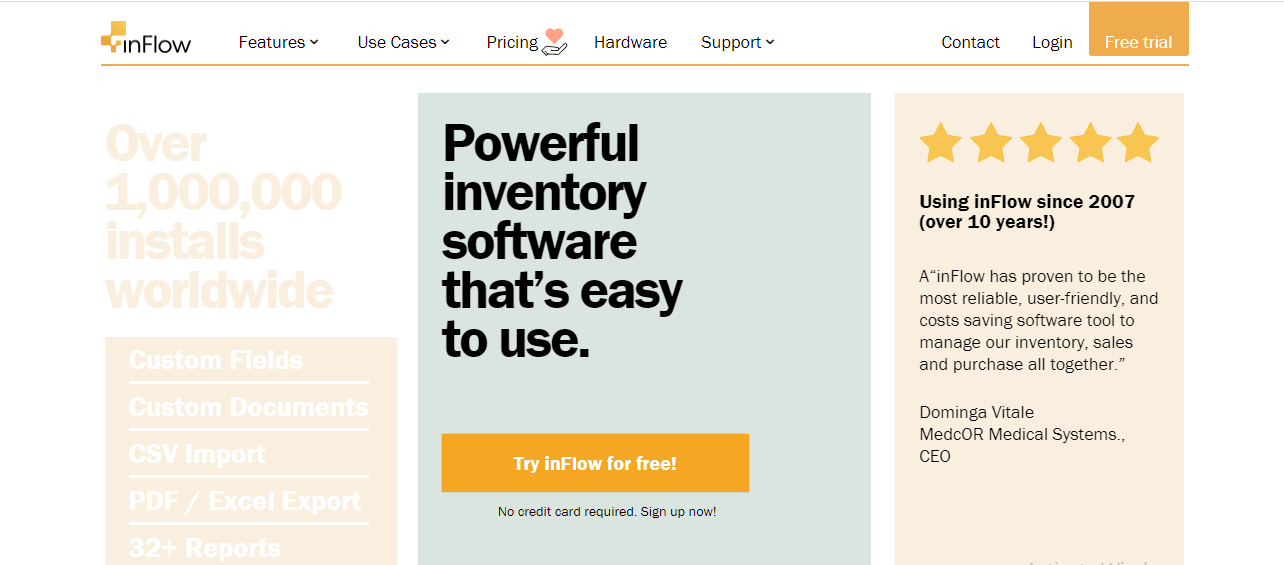
Reader’s awareness level: Solution aware
Big idea of the landing page: Easy to use inventory software
Goal: Start a free trial with Inflow Inventory
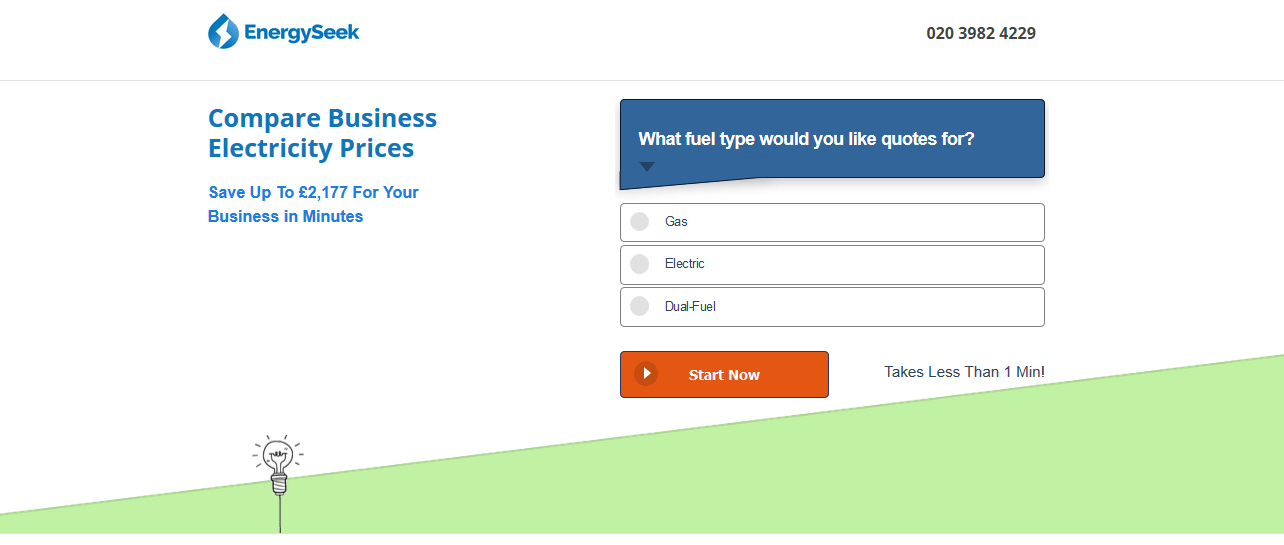
Reader’s awareness level: Solution aware
Big idea of the landing page: Compare prices for business electricity
Goal: Enter your details and receive a free quote
If your target audience is product aware customers, you’ll find these customers are comparing your product to another product.
For example, Lancer Review compares different freelance marketplaces. They help product aware customers through one-on-one comparisons, such as comparing Toptal to Upwork. Additionally, they provided detailed and well-researched reviews for each product, such as this 99Designs review.
Reader’s awareness level: Product aware
Big idea: Compare products
Goal: Get the customer to choose your product over the competition.
Step #2: Know what to say
In other words, we’re talking about researching your breakout topic. Instead of reinventing the wheel, hop on what’s trending in your new niche, then create better content than what others are publishing.
When doing research, you have two options:
Option #1: Head over to Google and insert your topic or keyword phrase, start reading and analyzing the content that shows up on the first page.
Option #2: Use MarketMuse to make your work easier.
Let me show you how to do this with MarketMuse.
Pro Tip: You’ll want to include the information you collect in a content brief to make your work easier when it’s time to write and edit.
Head over to MarketMuse, enter your topic and click on “Questions” to help you identify user intent.
In this case, my topic is “mattresses for side sleepers.”
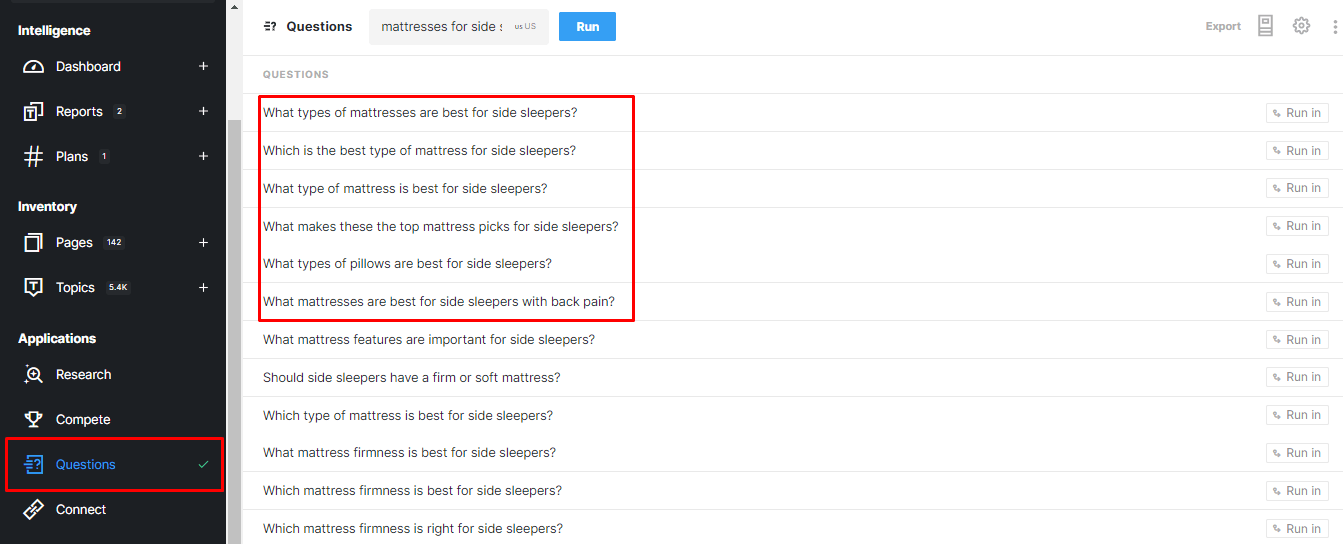
You’ll notice that users searching using this term are side sleepers. Their intent? I am a side sleeper, and I need to know what to look out for when buying a mattress.
Next, click on “Research” and enter your topic to help you identify what you need to cover in your content:
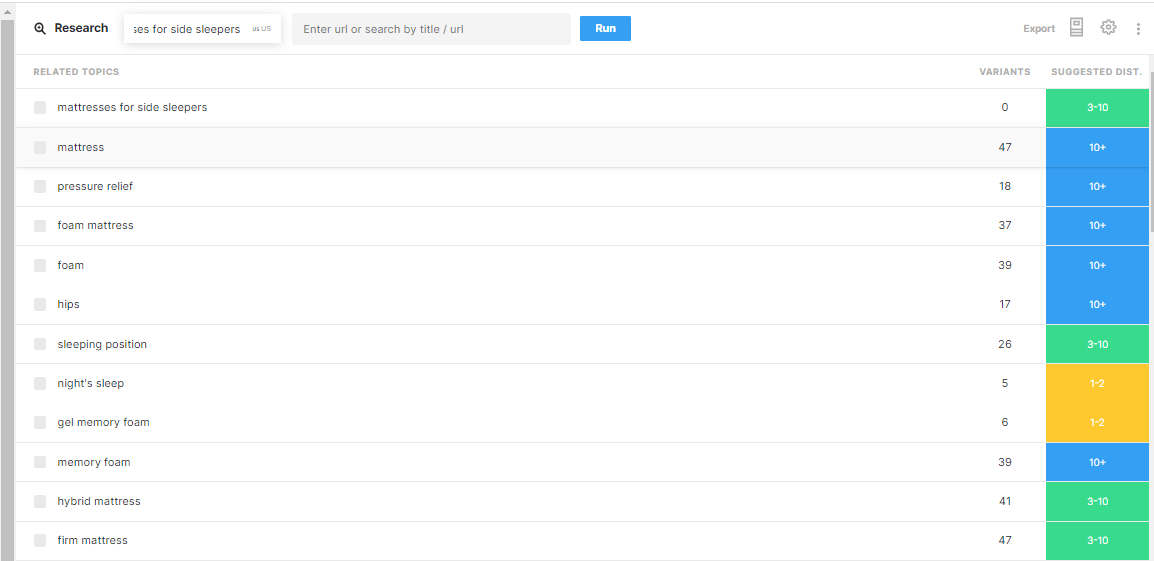
Once you’ve done this, click on the “Compete” tool, enter the same topic, and look at the content already published under this topic to identify gaps:
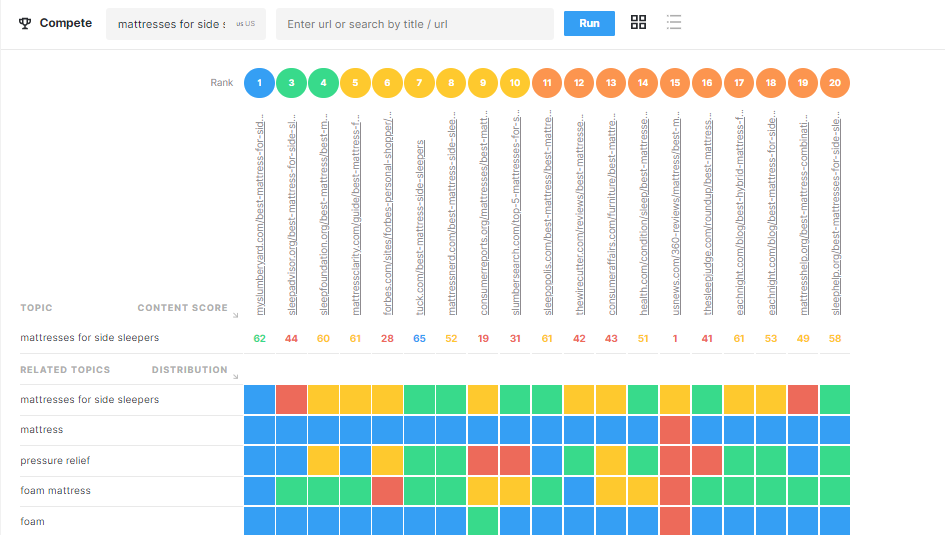
The red cells show you the topics that other pages have not covered on the subject about which you want to write.
To make sure that you’ve published comprehensive content, include both converted and not covered topics. This is key when creating an effective content strategy.
As you’re researching your content, you also want to know other types of content related to what you want to publish. This allows you to plan on how to internally link this content for your blog and create content silos.
Reading through Eachnight’s review on mattresses for side sleepers, you’ll notice how their internal links appear natural. As a reader, you’ll feel compelled to click and read to learn more.
Creating content silos of internal and external links help you build topical relevance for your niche. Then you can optimize it to show up in local search results.
Besides, content silos, allow you to create a funnel of niche content to your ‘money’ pages. This works well to leverage brand press opportunities of thought leadership in your niche. In turn, it increases your domain authority, which leads to more organic traffic from search engines like Google.
Step #3: Know how to say it
Once you know what to say, it’s time to sit down and write. Alternatively, you can share your content brief with a freelance writer you hire on Fiverr Pro, so they do the writing for you.
Here’s what you need to keep in mind when writing a compelling blog post:
- Open with a compelling hook.
- Your first sentence in your content should lead the reader into the second, the third, and so forth. And if it doesn’t, then you lose them.
- Create a compelling hook for your readers to draw them into your content and spark their interest in reading your content.
Here’s a formula that has worked well:
- Open with a problem
- Agitate the problem by talking about what’s at stake if they can’t solve it
- Present a solution to this problem that you’re going to talk about in the post
This guide on how to make money online from Swagbucks opens with a statistic bound to get hold of your attention.
Problem: “More than 40 million Americans have a side hustle.” If the reader doesn’t have one, they’re likely to feel left out and want to join the pack.
Agitation: Some side hustles require lots of time or capital to start.
Solution: With Swagbucks, you don’t need money or lots of time. If you have a phone and some time to spare during the day, you’re good to go.
Stories are another compelling hook. They capture the reader’s attention, put them at ease, and be willing to follow what you’re talking about if the story is relevant to them.
Alex Turnbull ran an experiment where he tested two similar posts: One with a story and another without. The result?
Given that both posts had similar content (except for the story), the post that opened with a story got 300% better engagement.
Open-ended questions can also compel your readers to dive deeper into your article. A question piques your curiosity, which you want to satisfy.
David Zheng began this article on site speed using a question, followed by a simple answer that keeps the reader in suspense:
Question: Can website speed really make a difference to your bottom line?
Answer: It can, and in more ways than one.
Step #4: Use a unique voice and tone
To stand out in your readers’ minds and connect with them, use a consistent tone and style in your content. Include the words and phrases your readers use when describing their problems to make sure that your content aligns with the conversation going on in their minds.
Look at how Rightinbox uses words and phrases from customer reviews in their blog content on email productivity.
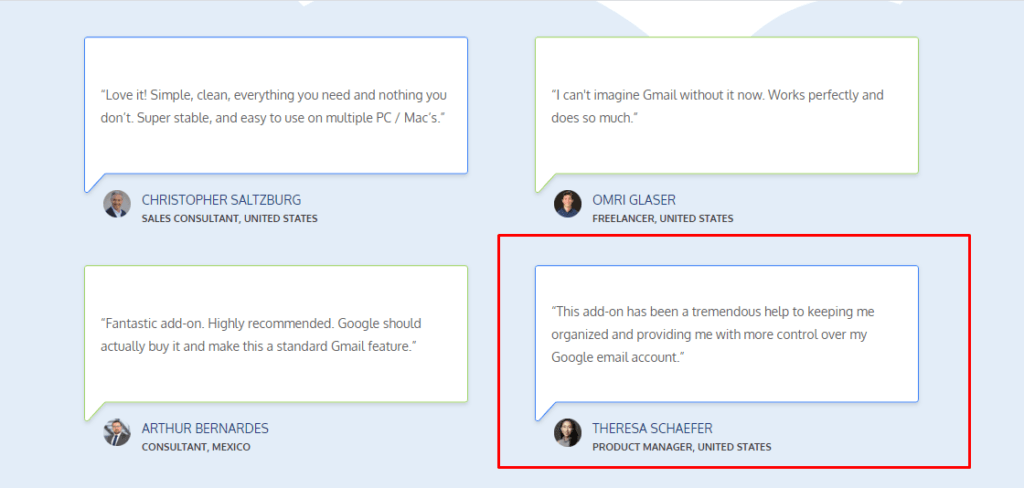
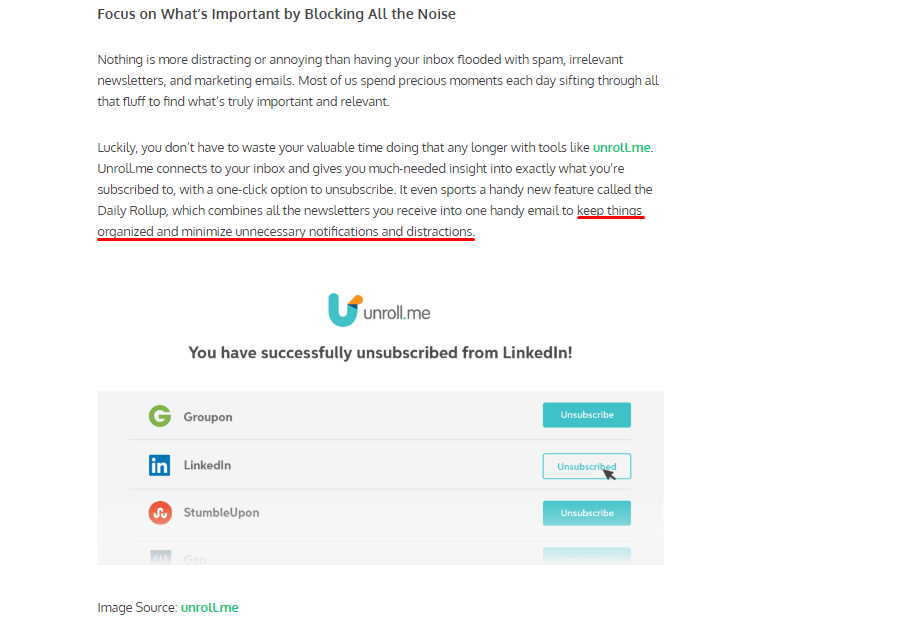
Can you pick up any similarities between the highlighted customer review and the underlined sentence?
If you don’t have any reviews yet, the research you have about your niche should give you a good idea of your readers’ tone.
It could be professional, conversational, quirky, or even educational. Whatever tone they use, make sure you stick within the limits lest you turn off your readers and lose them.
Step #5: Be confident in your writing style
As a blogger, you’re leading and educating your readers to a worldview. So don’t fear to speak your mind in the name of playing it safe.
In addition to providing value to your readers, you want to make them think — and opinions will get the job done for you. Besides, at any given time, you’ll have three types of readers:
- Those who agree with what you write.
- Those who are on the fence, still undecided on whether to believe you or not.
- Those who will never follow your advice no matter how valuable it is.
Since you already have one group with you, focus on convincing the second group to join you. This way, the reader who’s on the fence is taking the cue that you know what you are saying, and that’s why you’re using the tone you’re using. Any other approach makes them start questioning your credibility and expertise—consequently, their willingness to follow what you say.
Step #6: Break patterns
There’s always something going on in the mind of the reader just before they read your content. For example, if you’re looking for a blender, do you expect to see anything other than what it’s supposed to blend?
Well, Blendtec created a powerful blender for kitchen use, but they were struggling with brand awareness. Once they launched their “Will It Blend” YouTube series, they would blend different items such as camcorders, marbles, and smartphones.
These videos went viral, and so did Blendtec’s revenues, which grew to over $40 million in 2006. Find a way to entertain your readers while at the same time showing your service or product in action.
Login Lockdown has done something similar in their review on password managers. Instead of merely describing each tool, they take it a step further, put the features on a head to head competition, and then provide a score. It’s captivating, memorable, and informative.
Conclusion
Writing breakout topics isn’t easy. No writer ever knows how a blog post or any other content will perform before publishing it. That’s beyond your control.
What you can control, however, is what you do before you write — applying the rule of one, knowing what to say and how to say it.
And since we’ve already covered that, you have what it takes to write a breakout topic.
It’s your turn now. Go ahead and implement these ideas as you publish high quality content in your new niche to start getting new readers.
This is a guest post by Growth Ramp founder, Jason Quey. If you found this article valuable, check out this free product marketing course put together by his agency. It includes more marketing principles like those shared in this article. Growth Ramp used these same principles to double a startup’s annualized revenue in 6 months.
What you should do now
When you’re ready… here are 3 ways we can help you publish better content, faster:
- Book time with MarketMuse Schedule a live demo with one of our strategists to see how MarketMuse can help your team reach their content goals.
- If you’d like to learn how to create better content faster, visit our blog. It’s full of resources to help scale content.
- If you know another marketer who’d enjoy reading this page, share it with them via email, LinkedIn, Twitter, or Facebook.
Stephen leads the content strategy blog for MarketMuse, an AI-powered Content Intelligence and Strategy Platform. You can connect with him on social or his personal blog.